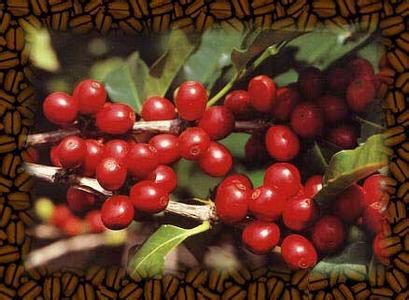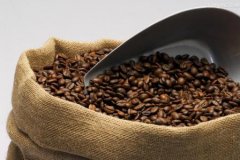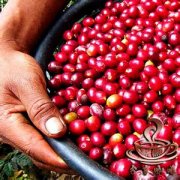Introduction to the characteristics of producing areas for describing the Flavor of Fine Coffee beans in Saint Roman Manor, Costa Rica

High-quality Costa Rican coffee is called "extra hard bean" SHB, which can grow at an altitude of more than 1500 meters.
Tarrazu in Costa Rican coffee is one of the major coffee producing areas in the world. The coffee produced has a light and pure flavor and pleasant aroma. Tarasu, located in the south of the country's capital, San Jos é, is one of the most valued coffee growers in the country. " La Minita Tarrazu coffee is a famous local product, but its production is limited, about 72600 kilograms per year.
It is grown on a piece of land called Lamini La Minita, which is owned by the last three generations of the McAlpine family in England. In fact, this land can produce more than 450 tons of coffee a year. Lamini coffee is grown without artificial fertilizers or pesticides, and harvesting and selection are done by hand to avoid some damage to coffee beans caused by air spray selection.
Other Costa Rican coffees worth mentioning are Juan Vinas,PR, H.Tournon, Windmill,SHB, Monte bello and Ssnta Rosa. Fine Costa Rican coffee is generally grown in Geredia and the central canyon. Another striking Costa Rican coffee is Sarchi (one of the five towns that represent Costa Rica's Coffee Route), which grows on the slopes of the Poas Volcano volcano, 53km from San Jose. Founded in 1949, Saatchi has a land area of 30770 hectares and grows sugar cane and coffee. The area is also famous for its handicrafts, attracting tourists from all over the world.
The Instituto del coffee industry, originally controlled by Costa Rica Cafe de Costa Rica (ICAFE), has been taken over by the official Coffee Committee (Oficina del Caf é). The products that are considered to be of substandard quality in the exported coffee are colored with blue vegetable dyes and then sold back to China. Coffee consumed domestically (dyed blue or undyed) accounts for about 10% of total production, and local per capita coffee consumption is twice that of Italy or the United States.
Costa Rica, with its fertile volcanic soil and good drainage, is the first country in Central America to grow coffee and bananas for commercial value. Costa Rican coffee and bananas are the country's main exports.
Coffee was introduced into Costa Rica from Cuba in 1729 and today the Costa Rican coffee industry is one of the most well-organized industries in the world with a yield of 1700 kg per hectare. Costa Rica has only 3.5 million people but 400m coffee trees, and coffee exports account for 25 per cent of the country's total exports. Costa Rica has also benefited from the establishment of the Central American Institute for Agricultural Research (Turrialba of the Central American Agricultural Research Institute, referred to as IAAC) in Tarasu, which is an important international research centre. Overall, Costa Rican coffee is full of particles, rich in acidity and unique and strong flavor.
The higher the altitude, the better the coffee beans, not only because the higher altitude can increase the acidity of the coffee beans and thus increase the flavor, but also because the night temperature at the higher altitude is lower, which can make the trees grow slowly, thus making the coffee beans have a stronger flavor. In addition, due to the high altitude drop caused by sufficient rainfall, is also very beneficial to the growth of coffee trees, but high altitude will increase the cost of picking and transportation. Costa Rica's coffee industry has adopted new technologies to increase efficiency, including the use of "electric eyes" to select beans and identify irregular coffee beans.
Important Notice :
前街咖啡 FrontStreet Coffee has moved to new addredd:
FrontStreet Coffee Address: 315,Donghua East Road,GuangZhou
Tel:020 38364473
- Prev

A brief introduction to the cultivation of flavor and taste in the producing area of Costa Rican Saint Roman Coffee Manor
Colombian coffee culture is also unique, coffee is the pride of Colombians, Colombians like to talk about a few things, in addition to their football, which was once one of the best in the world, is their proud coffee. Costa Rica is located in the Central American isthmus, belonging to North America, 10 north latitude, 84 west longitude. It is bordered by the Caribbean Sea to the east and the North Pacific Ocean to the west, with 1290 kilometers.
- Next

A brief introduction to the characteristics of coffee grindability and taste in Chateau Saint-Roman, Costa Rica
The research center, located about 30 kilometers northeast of San Jose, the capital of Costa Rica, belongs to the Costa Rican Coffee Association and is a research institution for coffee planting, breeding and quality inspection in Costa rica. in addition, it also has 10 hectares of experimental plots, planting a number of excellent varieties. Coffee is the main agricultural product of Costa Rica, with an annual output of more than 2 million bags (60 kg).
Related
- Does Rose Summer choose Blue, Green or Red? Detailed explanation of Rose Summer Coffee plots and Classification in Panamanian Jade Manor
- What is the difference between the origin, producing area, processing plant, cooperative and manor of coffee beans?
- How fine does the espresso powder fit? how to grind the espresso?
- Sca coffee roasting degree color card coffee roasting degree 8 roasting color values what do you mean?
- The practice of lattes: how to make lattes at home
- Introduction to Indonesian Fine Coffee beans-- Java Coffee producing area of Indonesian Arabica Coffee
- How much will the flavor of light and medium roasted rose summer be expressed? What baking level is rose summer suitable for?
- Introduction to the characteristics of washing, sun-drying or wet-planing coffee commonly used in Mantenin, Indonesia
- Price characteristics of Arabica Coffee Bean Starbucks introduction to Manning Coffee Bean Taste producing area Variety Manor
- What is the authentic Yega flavor? What are the flavor characteristics of the really excellent Yejasuffi coffee beans?

